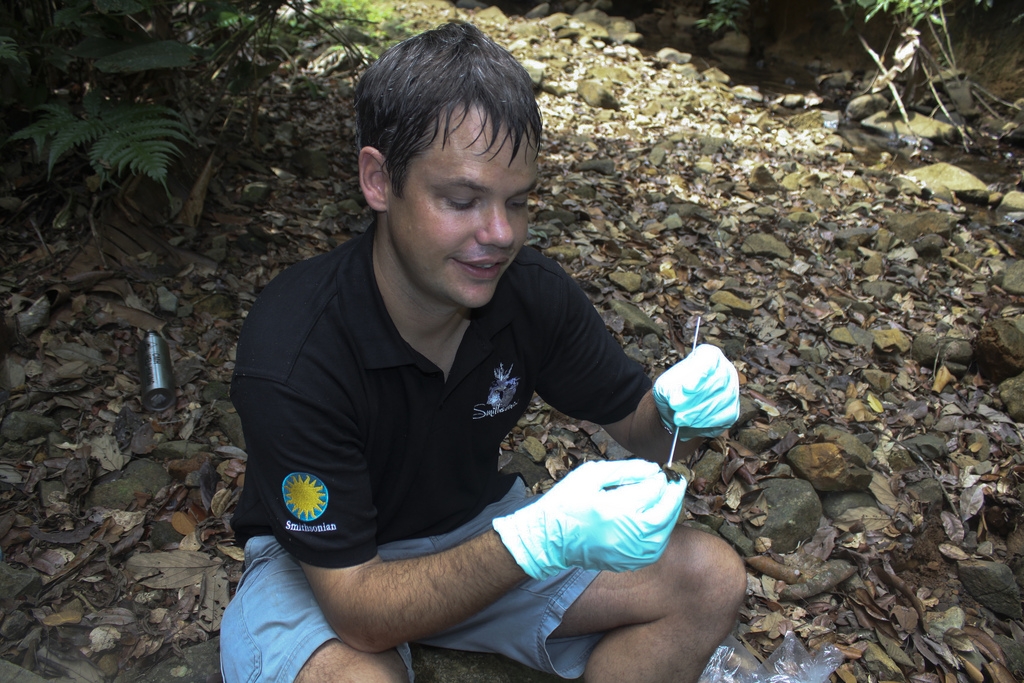
Dr. Brian Gratwicke swabs a frog in the field to test it for chytrid. (Courtesy of Brian Gratwicke, Smithsonian Conservation Biology Institute)
Today, conservation biologists from around the world remain locked in a race against amphibian extinction. In Panama, researchers who care about conserving the country’s abundant biodiversity are re-evaluating the cards they were handed, recognizing just how high the deck is stacked against their efforts.
The primary cause of amphibian decline, a fungal disease called Bd continues to run its insidious course. Scarily, it has reached Eastern Panama sooner than expected.
The outlook is grim. Nearly a third of the 6,000 amphibian species worldwide could be gone within decades. Gone. And in many instances, the fungus will take the blame. Rare species seem to disappear first, leaving the more common species, which may make amphibians even more susceptible to other diseases.
Still, there is some hope. At the Smithsonian in Panama, researchers continue to discuss the possibilities of undercutting the disease and its effects in the wild.
Captive breeding projects in Panama insure the genetic lineages of Panama’s most endangered species. Volunteers and dedicated personnel pour their energy into rescue missions and husbandry projects despite tight budgets.
Smithsonian researcher Doug Woodhams and colleagues published a comprehensive article in the journal Frontiers of Ecology about “mitigating amphibian disease with strategies to maintain wild populations and control chytriodiomycosis.” The study finds that mitigation does not necessarily involve wiping out the fungal pathogen in the wild, nor does it necessarily mean preventing disease (neither of which are realistic approaches, anyway).
Their approach is to use information about species that don’t seem to succumb to the disease but do act as hosts that transmit the fungus along with information about the virulence of the disease under different environmental conditions to manage populations in the wild. They call their approach “an ecologically-oriented damage response network.”
If anything, recent news and research efforts indicate that perseverance in the difficult tasks of captive breeding and active disease management is the key, rather than spending precious time searching for an elusive silver bullet.
–Charlie Hruska, Columbia University and Panama Amphibian Rescue and Conservation Project volunteer
